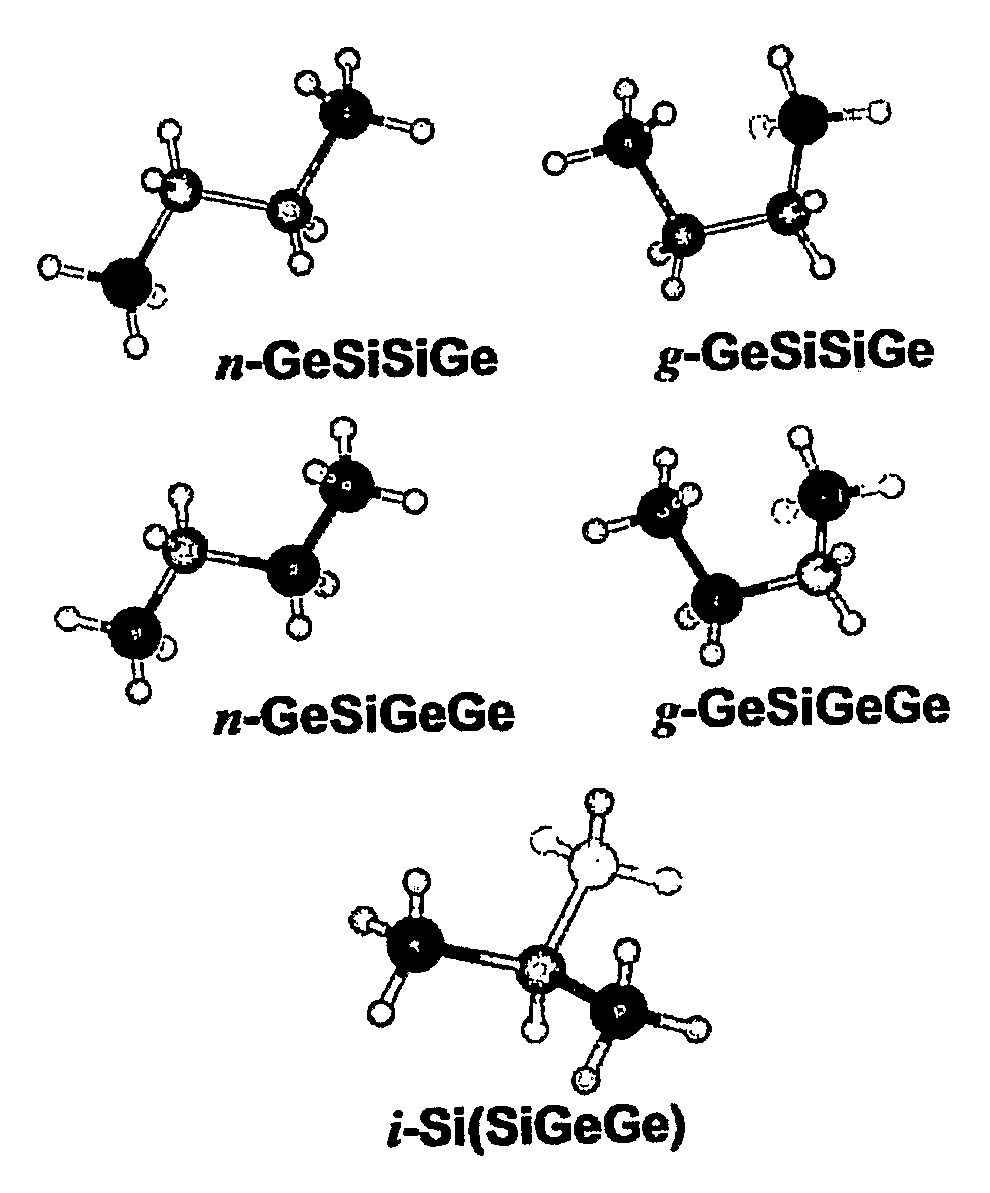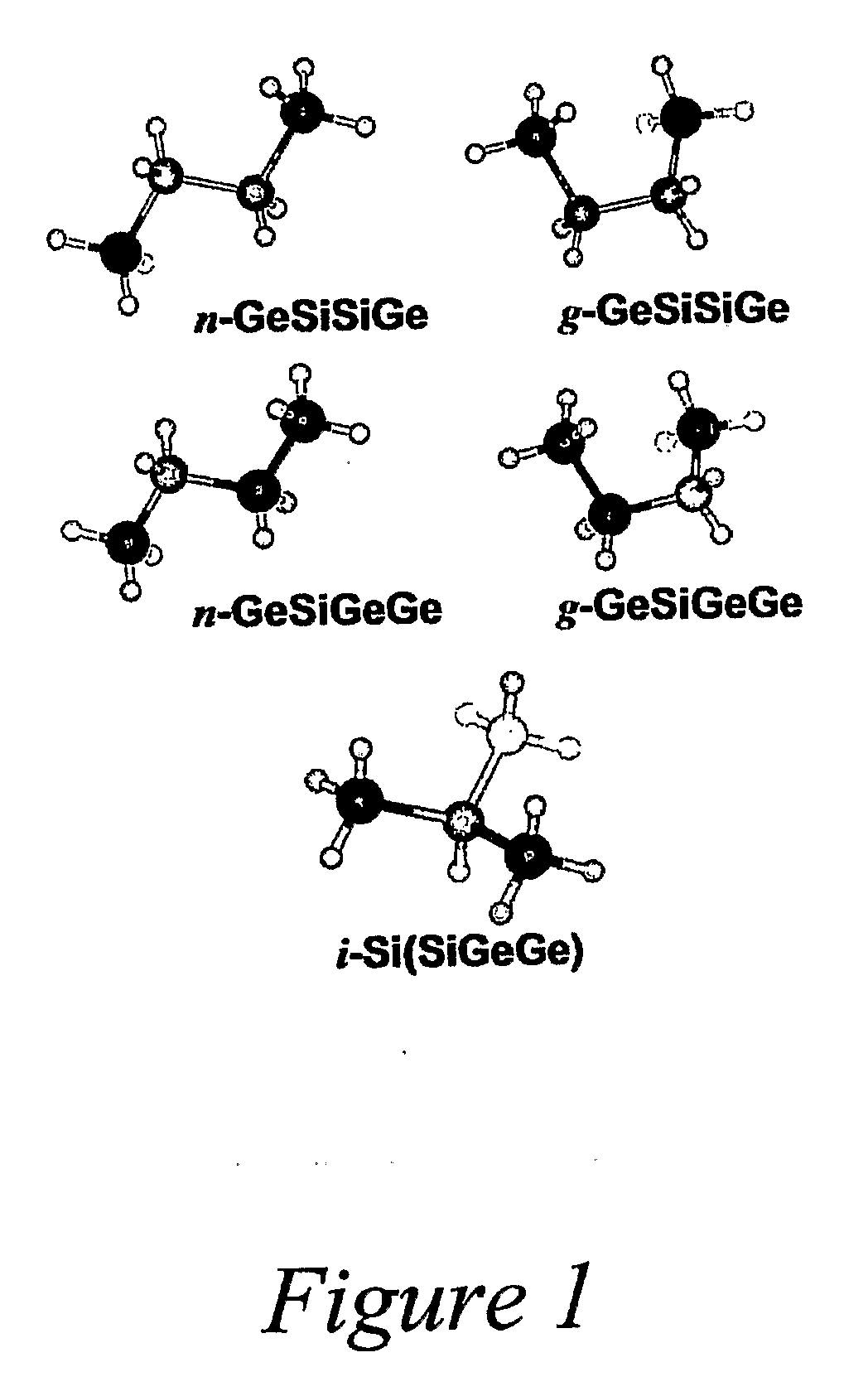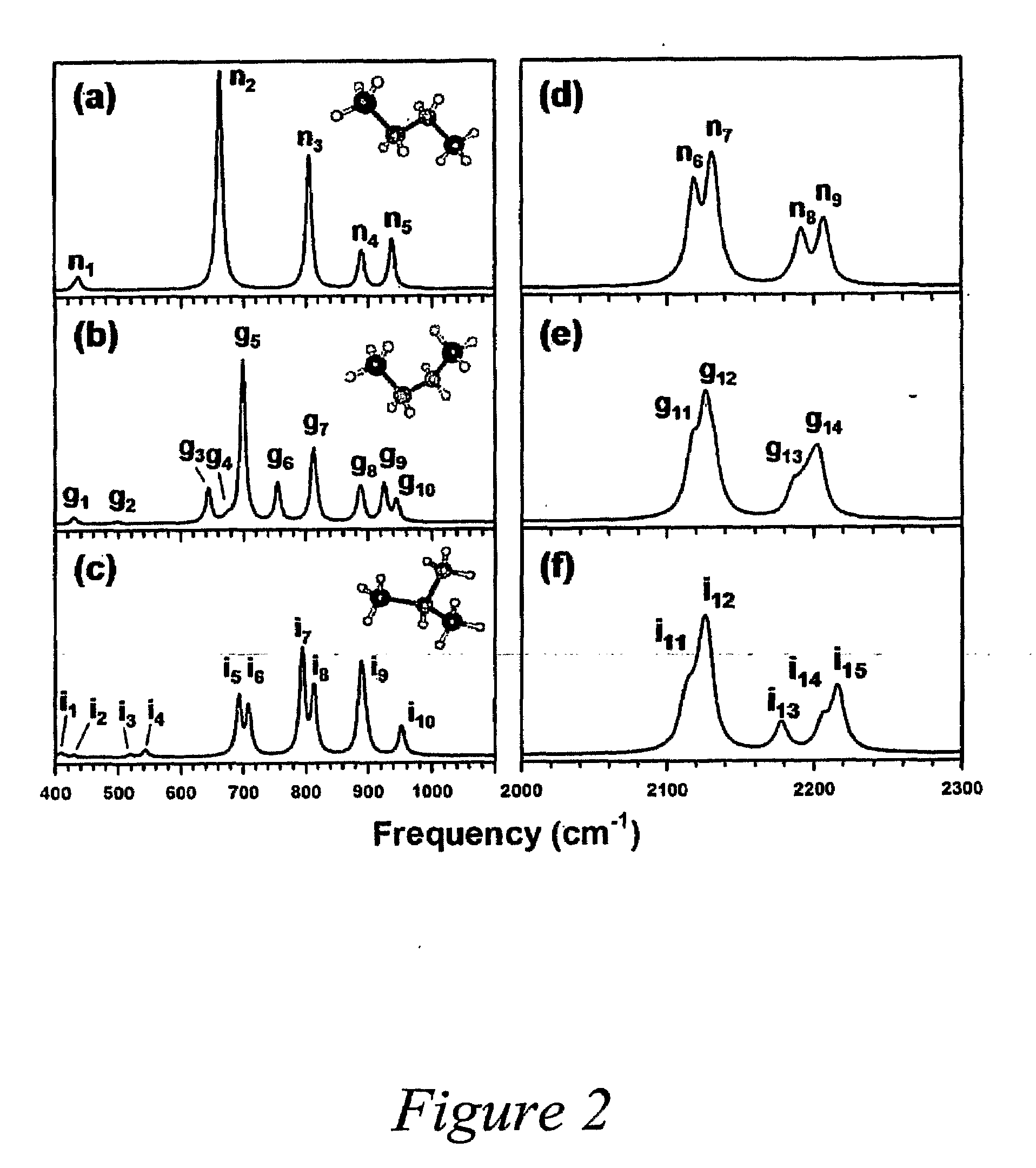Silicon-Germanium Hydrides and Methods for Making and Using Same
a technology of silicongermanium hydride and silicongermanium hydride, which is applied in the field of silicongermanium alloys, silicongermanium alloys, semiconductor structures, can solve the problems of complex and fraught best current route to these materials, low growth rate of 0.2 nm/min, and inability to meet the requirements of high-throughput device fabrication
- Summary
- Abstract
- Description
- Claims
- Application Information
AI Technical Summary
Benefits of technology
Problems solved by technology
Method used
Image
Examples
examples
[0099]The synthesis of butane-like (GeH3)2(SiH2)2 (Also referred to as GeH3-SiH2-SiH2-GeH3) (1), (GeH3)2SiH(SiH3) (also referred to as SiH[(GeH3)2(SiH3)] (2) and (GeH3)2(SiH2GeH2) (referred to above as GeH3-SiH2-GeH2-GeH3) (3) Si—Ge hydrides with applications in low temperature synthesis of Ge-rich Si1-xGex optoelectronic alloys is herein demonstrated. The compositional, vibrational, structural and thermochemical properties of these compounds were studied by FTIR, multinuclear NMR, mass spectrometry, Rutherford backscattering, and density functional theory (DFT) simulations. The analyses indicate that the linear (GeH3)2(SiH2)2 (1) and (GeH3)2(SiH2GeH2) (3) compounds exist as a mixture of the classic normal and gauche conformational isomers which do not seem to interconvert at 22° C. The conformational proportions in the samples were determined using a new fitting procedure, which combines calculated molecular spectra to reproduce those observed by varying the global intensity, frequ...
PUM
| Property | Measurement | Unit |
|---|---|---|
| Temperature | aaaaa | aaaaa |
| Temperature | aaaaa | aaaaa |
| Thickness | aaaaa | aaaaa |
Abstract
Description
Claims
Application Information
 Login to View More
Login to View More - R&D
- Intellectual Property
- Life Sciences
- Materials
- Tech Scout
- Unparalleled Data Quality
- Higher Quality Content
- 60% Fewer Hallucinations
Browse by: Latest US Patents, China's latest patents, Technical Efficacy Thesaurus, Application Domain, Technology Topic, Popular Technical Reports.
© 2025 PatSnap. All rights reserved.Legal|Privacy policy|Modern Slavery Act Transparency Statement|Sitemap|About US| Contact US: help@patsnap.com



